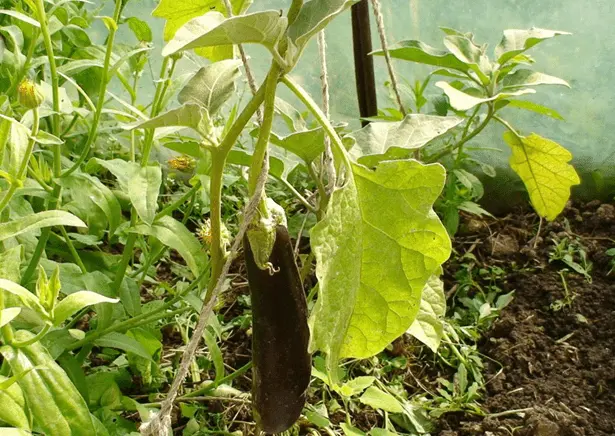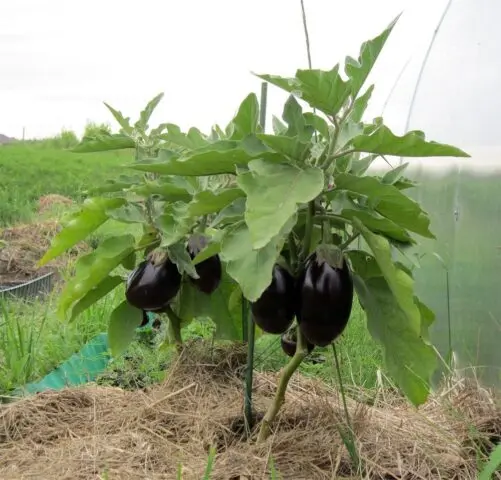Contents
Eggplant leaves fall in a greenhouse for various reasons. Basically, they are associated with improper care. For example, improper watering, deficiency and even excess of fertilizers can lead to this problem. To avoid them, it is recommended to follow the basic cultivation rules described in the article.
Why do eggplant leaves fall in a greenhouse
Eggplant leaves can fall off for various reasons. Even when growing in a greenhouse, it is not always possible to create suitable conditions, which is why the plants begin to get sick and lag behind in development. The main negative factors are described below.
Unsuitable soil
Eggplant leaves may fall due to insufficient quality soil. Plants are quite demanding on the composition and structure of the soil. Chernozems and loose loams with a neutral or slightly acid pH from 6,0 to 7,0 are optimally suited for them.
If there is infertile soil on the site, it is first recommended to dig it up and add humus or compost in the amount of 10 kg per 1 square meter. If there is a lot of clay in the soil, it is dense, heavy, you will need to add sawdust or sand 3-5 kg each to the same area.
Temperature differences
Eggplants are heat-loving plants, they develop well in the range of 22-28 degrees. At the same time, night temperatures should not be below +15. If strong cold snaps are periodically observed, and during the day the air warms up excessively and it becomes hot, the leaves will begin to fall off.
Nutrient deficiency
Due to the lack of macro- and microelements, eggplant leaves can also fall off. This phenomenon is most often observed if the soil is infertile or fertilizers are applied irregularly. As a rule, plants are fed at least three times per season, alternating mineral fertilizers with organic ones. At the first stage, when eggplants are gaining green mass, they need nitrogen most of all. The deficiency of this element manifests itself very quickly, the main symptoms are:
- pale, yellow leaves;
- growth retardation;
- shoots become thinner;
- inflorescences shrink.

Leaves may fall due to nitrogen deficiency
During the formation of buds and ovaries, eggplants need enhanced potassium-phosphate top dressing. With a lack of potassium, the leaves will not fall off, but will acquire a bluish-green, bronze tint. The lack of phosphorus can be determined by approximately the same signs as nitrogen.
When applying top dressing, it is important to observe not only the regularity (every two weeks), but also the dosage. If you systematically violate the instructions, the harm from such care will be more than good. Over time, the soil will become saline, its pH will change, which will make nutrients less absorbed. As a result, the leaves will begin to turn yellow and fall off.
Incorrect watering
Also, the plant may suffer due to improper watering. When growing in a greenhouse, adjusting the rate is quite simple, since it does not depend on rainfall. It should be borne in mind that eggplants are moisture-loving, they need a constant supply of water.
As a rule, watering of young seedlings is planned every three days, and adult bushes – once every 5 days. A lack of moisture should not be allowed, because because of this, the leaves begin to turn yellow and fall off. Too much water is also harmful. Due to high humidity, plants can suffer from rot and other diseases.
Therefore, when watering, it is recommended to monitor the surface layer of the soil. It should remain slightly damp, without completely drying out and even more so cracking.
disease
Eggplant leaves can also fall off due to disease. When grown in a greenhouse or in open ground, plants may suffer from such pathologies:
- late blight;
- fusarium wilt;
- spotting;
- verticillosis;
- mosaic.
Symptoms of diseases are different. They are mainly associated with yellowing or blanching, as a result of which the foliage dies off and may fall off. Bushes look weakened, lag behind in development. Noticeably fewer ovaries are formed, so the yield drops.
For prevention, it is recommended to observe the watering rate, periodically ventilate the greenhouse, regularly feed eggplants and give water. It is equally important to treat with fungicides or folk remedies.

Signs of eggplant late blight are visible during visual inspection
vermin
Leaves can also fall off due to the action of pests. In the greenhouse, the following insects are especially dangerous:
- aphid;
- thrips;
- spider mites;
- whiteflies.
Some pests are clearly visible to the naked eye. So, with careful consideration, you can see a colony of aphids or whiteflies. Others have microscopic bodies. For example, a spider mite is practically invisible, and besides, it constantly hides. But its presence can be determined by the characteristic cobweb covering the lower surface of the leaves, because of which they can fall off.
What to do if eggplant sheds leaves
It is necessary to organize careful care of eggplants. Regularly give water, at least once every 4-5 days. Preliminary it is defended so that the liquid has room temperature.
Top dressing is applied regularly at intervals of 2-3 weeks. From organic matter, mullein infusion 1:10 or litter 1:20, as well as liquid humates, are used. It is useful to alternate them with complex mineral fertilizers, for example, nitrophoska or Kemira Lux.
The soil is regularly loosened, weeded. The greenhouse should be ventilated periodically, especially after watering. Immediately after transplanting, seedlings are recommended to be treated with Bordeaux liquid or another fungicide.
Preventive measures
It is always more difficult to treat plants for diseases and developmental disorders than to prevent negative consequences. Therefore, summer residents are advised to observe such preventive measures:
- Planting density – the minimum distance between the bushes is 35 cm.
- Shading in hot weather with a white cloth.
- Avoid over watering.
- Etch the seeds in a fungicide or a bright pink solution of potassium permanganate.
- Every autumn or spring, treat the surfaces of the greenhouse with any antiseptic.

Regular watering and fertilizing will allow you to get a good harvest.
Conclusion
Eggplant leaves fall in the greenhouse mainly due to improper care. To avoid this problem, it is necessary to properly organize watering, fertilizing. In most regions, eggplant is cultivated in greenhouses, where it is easier to create suitable conditions.









